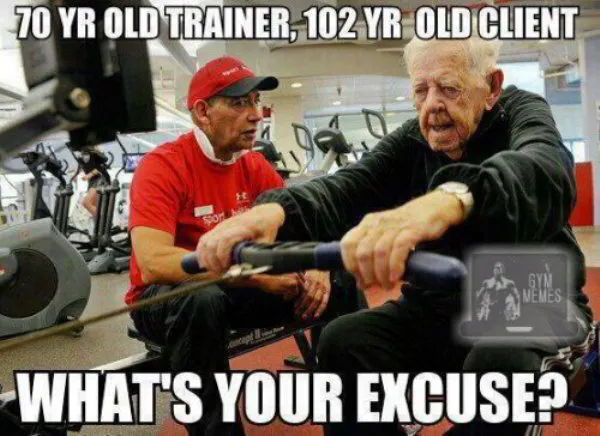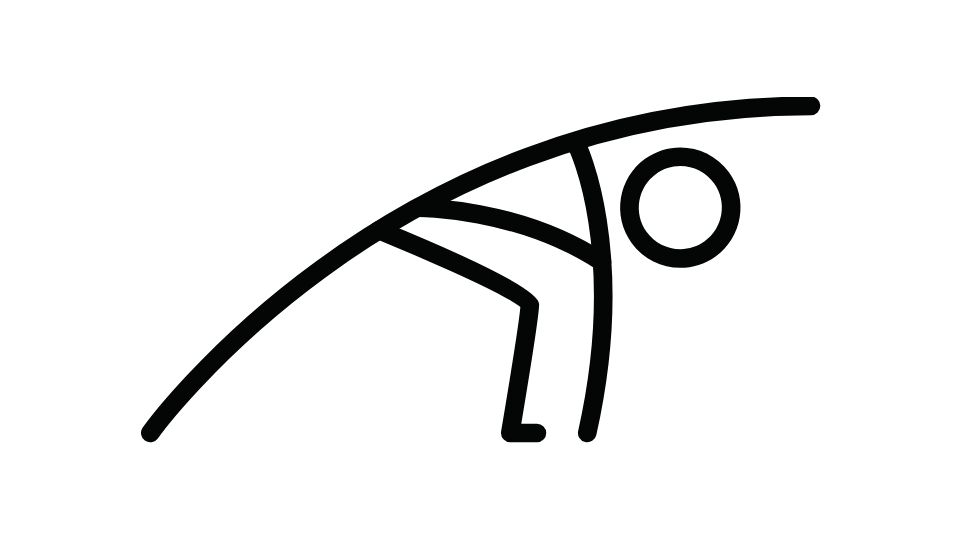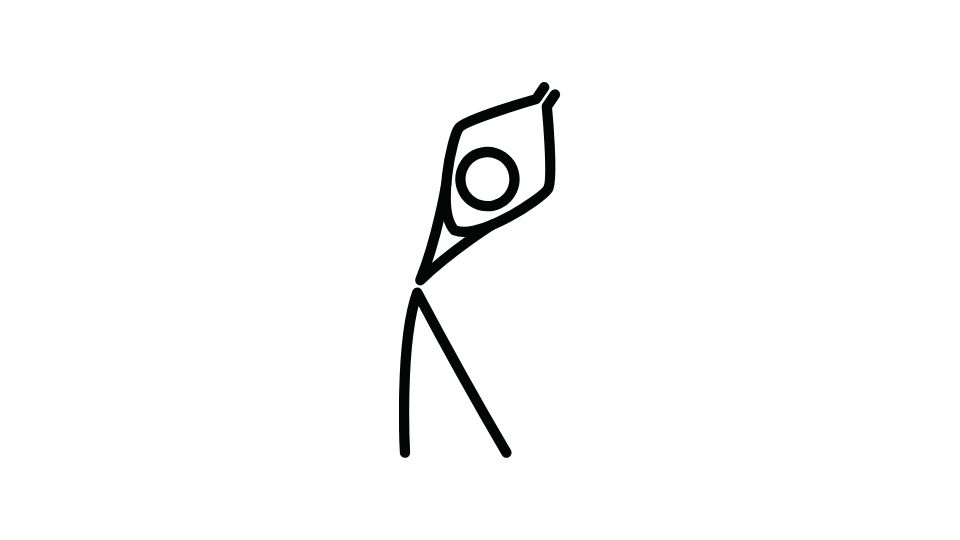Ever notice how some people at the gym seem super focused while others wander around aimlessly?
The difference is usually goals – specifically, whether they’re thinking short-term or long-term.
I used to be that person hopping between random workout routines, expecting six-pack abs to magically appear after two weeks of inconsistent effort.
Spoiler alert: that approach doesn’t work.
What DOES work is understanding the difference between short-term and long-term fitness goals and how they complement each other.
Let’s break down these goals, how they work together, and how you can use them to actually get somewhere with your fitness journey. (Without the endless cycle of motivation → quitting → motivation → quitting… sound familiar?)

Short-Term vs Long-Term Fitness Goals: What’s The Difference?
Understanding Short-Term Fitness Goals

Short-term fitness goals are like your daily to-do list. They’re the small wins you can knock out in the next few weeks to 3 months.
Think of them as your fitness “hats” – easy to try on, take off, and change up if needed. They help you build momentum and create those all-important habits.
Examples of short-term fitness goals:
- Exercising 3 times a week for 20-30 minutes (walking, rowing, whatever)
- Stretching for 10 minutes daily for a month
- Completing a 30-day beginner strength program
- Hitting 10,000 steps daily for four weeks
- Adding 10 pounds to your bench press in 6 weeks
The best short-term goals follow the SMART formula: Specific, Measurable, Achievable, Relevant, and Time-bound.
For example: “I will do 20 push-ups every morning for the next 30 days” is way better than “I want to get stronger arms.”
Why? Because you’ll actually know if you’re doing it!
Understanding Long-Term Fitness Goals
Long-term fitness goals are your big, juicy targets that might take 6+ months, a year, or even several years to achieve.
These are your fitness “tattoos” – the commitments that require serious thought and dedication. They represent your ultimate vision of what you want to accomplish with your body.
Examples of long-term fitness goals:
- Running a half-marathon within a year
- Losing 40 pounds over 8-12 months
- Being able to do 5 strict pull-ups when you currently can’t do any
- Maintaining a consistent fitness routine for an entire year
- Completing a tough physical challenge like a Spartan Race
Long-term goals are about the bigger picture. They keep you moving forward even when motivation dips (and it will).
How Short-Term and Long-Term Goals Work Together

Here’s where the magic happens: short-term and long-term goals need each other.
Think of your long-term goal as your destination and short-term goals as the turn-by-turn directions to get there.
For example, if your long-term goal is running a half-marathon in 12 months, your short-term goals might be:
- Month 1: Run/walk for 20 minutes, 3x per week
- Month 2: Complete a 5K without stopping
- Month 3: Run 4x per week, including one longer run
- And so on…
Each short-term goal creates the building blocks needed for the long-term achievement. They’re the small, realistic steps that eventually lead to major change.
As research from the American Psychological Association shows, people who break down larger goals into smaller milestones are significantly more likely to succeed.
Practical Examples of Short-Term and Long-Term Fitness Goals
Short-Term Goal Example: 30-Day Strength Challenge
Let’s say you’ve never lifted weights before but want to start. A perfect short-term goal would be:
“Complete a 30-day beginner strength program, training 3 days per week.”
This goal is:
- Specific (exactly what you’ll do)
- Measurable (you either do the workouts or you don’t)
- Achievable (for most people)
- Relevant (to building strength)
- Time-bound (30 days)
You can track your progress by checking off workouts and noting the weights used. By the end, you’ll have created a new habit and built some initial strength.
Long-Term Goal Example: From Couch to Half-Marathon

A good long-term goal might be: “Run a half-marathon in 12 months.”
This is perfect because:
- It’s challenging but doable with consistent training
- It requires progressive improvement over time
- It can be broken down into many short-term goals
- It has a clear finish line (literally!)
To support this goal, you might set short-term goals like completing a 5K in 3 months, a 10K in 6 months, and gradually increasing your long run distance until you’re ready for 13.1 miles.
According to Runner’s World, most people can prepare for a half-marathon in 12-16 weeks if they’ve already built a basic running foundation – which is exactly what your short-term goals would help you do.
The Role of Nutrition and Tracking in Achieving Fitness Goals
You’ve probably heard the saying “you can’t out-train a bad diet” about a million times.
Annoying as it is, it’s true. Nutrition accounts for roughly 70-80% of your results, whether your goal is weight loss, muscle gain, or improved performance.
Think of it this way:
- Exercise is the stimulus for change
- Nutrition is what makes that change possible
For example, if you’re trying to build muscle, you need a caloric surplus with adequate protein. If you’re trying to lose fat, you need a moderate caloric deficit while maintaining protein intake.
That’s why tracking your nutrition is crucial for both short and long-term goals. Research published in the Journal of Medical Internet Research found that people who tracked their food intake consistently lost significantly more weight than those who didn’t.
The easiest way to track? Simple text-based tools that don’t require complicated apps or endless scrolling through food databases.
Tips for Setting Effective Fitness Goals

1. Be realistic about your starting point
Nothing kills motivation faster than setting a goal that’s completely disconnected from your current fitness level. If you haven’t exercised in years, don’t plan to work out 6 days a week right away. Start with 2-3 and build up.
2. Focus on behaviors, not just outcomes
Instead of “lose 20 pounds,” try “follow my meal plan 90% of the time and complete all scheduled workouts for 8 weeks.”
The weight loss is the outcome, but the behaviors are what you actually control.
3. Build in accountability
According to the American Society of Training and Development, having an accountability partner increases your chance of success by up to 95%. Find a workout buddy, hire a coach, or join a community with similar goals.
4. Track progress in multiple ways
The scale is just one metric (and often not the best one). Also track:
- How your clothes fit
- Progress photos
- Workout performance
- Energy levels
- Sleep quality
- Mood
5. Celebrate small wins
Did you hit all your workouts this week? Celebrate! Added 5 pounds to your squat? Celebrate! These small victories compound over time into major transformations.
Remember, fitness isn’t about perfection – it’s about progress. Short-term goals give you regular wins to celebrate, while long-term goals keep you moving in the right direction.
By understanding and combining both types of goals, you’ll build a sustainable approach to fitness that actually works. And isn’t that what we all want?




Leave a Reply